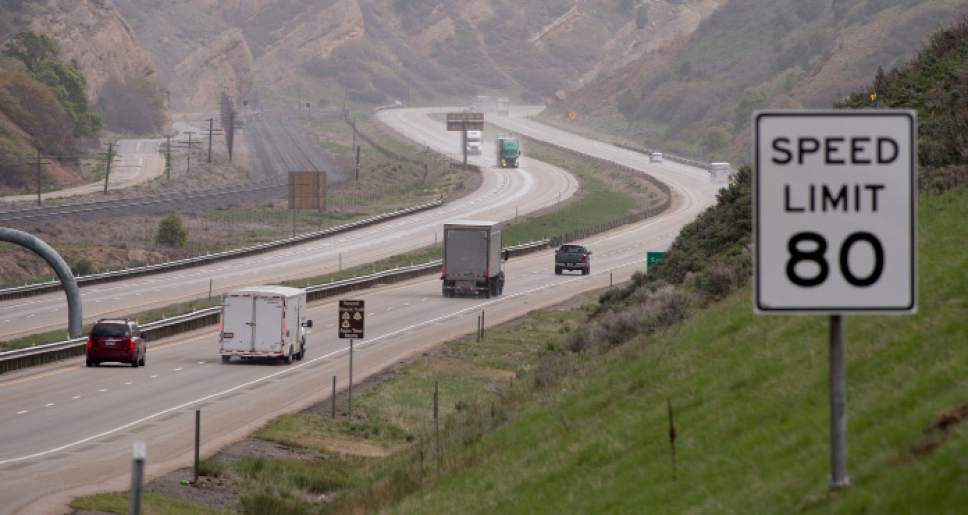This is an archived article that was published on sltrib.com in 2016, and information in the article may be outdated. It is provided only for personal research purposes and may not be reprinted.
Freeway travel in southern Utah is about to become a little faster — legally.
The Utah Department of Transportation is proposing to add 11 miles more of 80 mph speed zones on Interstate 15 in two canyon passes north and south of Cove Fort, where Interstate 15 intersects Interstate 70.
The increase would be in areas known locally as Baker and Pine Creek canyons, said Robert Miles, UDOT director of traffic and safety. Speed limits in different sections there now are 65 mph or 75 mph.
Also, an area just north of Cove Fort — mile marker 138.8 to 141.6 — would jump from the current 65 mph limit to 75 mph for cars. Trucks in that stretch would still be limited to 65 mph, Miles said.
"The character of I-15 in some of those passes has changed with improvements we have made," Miles said. "We have more climbing lanes and more passing zones to handle trucks. That allows us to take a look at the speed limits."
UDOT also proposes to add another 7 miles total of 80 mph areas on I-70 at small, scattered locations, Miles said. Those changes are mostly to ensure that speed zones are the same in both directions of I-70 and will resolve some discrepancies where they now differ.
Miles expects the changes to occur within a month, after consultation with the Utah Transportation Commission and local governments.
He said UDOT constantly reviews speed limits by studying data such as engineering changes, crash history and how fast traffic actually moves in various sections.
UDOT studies in areas proposed for higher limits show that 85 percent of motorists often are traveling faster than the posted limit. That creates problems with maneuvering around slower-moving traffic, which may be trying to obey posted limits.
With the higher speed limits, more traffic is expected to travel at similar speeds.
"This will increase safety," Miles said. "The closer we sign the system to the way it operates, the better off we all are."
Past studies have shown that boosting speed limits to 80 mph has increased average speeds by only 1 to 2 mph, and actually decreased them in some areas — suggesting they reflect what drivers intuitively feel is a safe speed.
Utah Transportation Commission member Naghi Zeenati quipped that the higher speed limits allow "most of us to drive legally at what had been illegal."
After speed limits were raised in recent years, highway deaths have climbed in Utah. But Miles said the higher speed limits are not to blame. Most increases in fatalities have occurred on arterial roads and city streets, he said, not freeways.
In addition, UDOT spokesman John Gleason notes that the number of vehicle miles traveled in the state increased amid cheaper gasoline prices in recent years, and higher travel usually brings more highway deaths. Miles said fatalities are up because of that by 10 percent to 15 percent in most states, while they have increased about 7 percent in Utah.
Such things as distracted driving and failure to use seat belts are bigger reasons for increasing deaths, Gleason said.
After experimenting with 80 mph speed zones for several years on stretches of I-15 in southern Utah, the Legislature in 2013 passed a law allowing UDOT to raise limits to 80 mph wherever studies show it likely would be safe.
After the proposed changes, Utah would have about 600 miles of 80 mph zones on its freeways.
When Utah first adopted 80 mph limits, Texas was the only other state with such fast speeds on any roads. Now, Idaho, Wyoming, Montana and South Dakota all have opened up the throttle.



